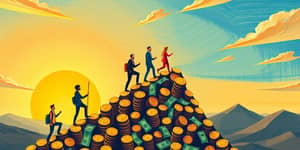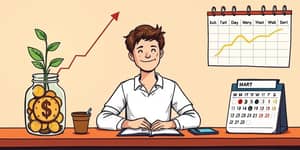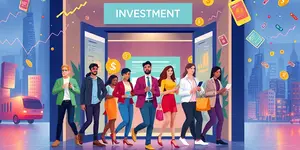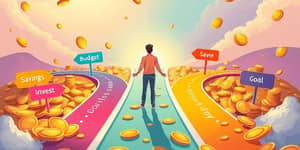
In a world fixated on stock tickers and quarterly earnings, there’s a greater asset quietly waiting to be nurtured: your own potential and well-being. While traditional investments like stocks, bonds, and real estate dominate headlines, the most enduring gains often come from within.
Investing in yourself encompasses formal education, professional certifications, health improvement, and the cultivation of soft skills. Unlike market returns that can fluctuate sharply, personal growth benefits compound steadily, boosting your earning potential and lifelong resilience. For example, U.S. workers holding a bachelor’s degree earn on average 65% more annually than those with only a high school diploma. Over a 40-year career, that gap can translate into hundreds of thousands of dollars in additional income.
Meanwhile, traditional benchmarks like the S&P 500 offer an inflation-adjusted annual return of 6.86% long-term. While attractive, these returns are vulnerable to volatility, economic cycles, and behavioral pitfalls. By comparison, skills acquired through continuous learning typically yield benefits that far exceed a single-digit percentage rate.
Compounding, often called the eighth wonder of the world, transforms modest contributions into substantial wealth over time. The Rule of 72 illustrates that an 8% annual return doubles your principal in about nine years—without compounding, that same growth could take more than a decade.
In the past five years, the S&P 500 climbed 183% from its March 2020 low. Yet this surge came with emotional roller-coasters: plunging markets in 2020, rapid recoveries, and persistent volatility in early 2025. Despite the noise, 64% of self-directed investors believe their portfolios will match or exceed past performance in the months ahead, and nearly half view dips as prime buying opportunities for long-term gains.
Setting financial goals is widespread—65% of Americans established savings targets for 2025—but execution often falters. External pressures such as rising living costs (41%) and unexpected income drops (19%) contribute to a 78% obstacle rate for savers. Similarly, only 24% contributed to retirement accounts in 2025, hindered by market unpredictability and short-term anxieties.
On the psychological front, increased market exposure can lower risk tolerance and fuel pessimism. More experienced investors sometimes become overly cautious, missing out on potential returns. By contrast, investing in your own knowledge and capabilities builds confidence and reduces emotional friction when making financial decisions.
Each of these pillars offers measurable and intangible benefits. For instance, improved health not only lowers insurance premiums and medical expenses but also enhances daily performance and creative problem-solving.
In 2025, nearly 25% of homeowners undertook DIY projects, reflecting a growing trend toward resourcefulness and skill acquisition. Just as individuals transform their living spaces, you can reshape your financial future by leveraging these digital and analog tools.
Embarking on a self-investment journey requires clear objectives, disciplined execution, and regular reflection. Start by defining specific, measurable goals:
Track progress with simple metrics—hours of study, new connections made, or account balances—and adjust strategies in response to changing circumstances. Remember, small consistent actions create massive results over years and decades.
Market indexes ebb and flow, cycles shift, and sentiment can swing from greed to fear in a heartbeat. Yet when you channel resources into your own growth—through education, health, relationships, and financial knowledge—you build an asset base that no downturn can fully erode.
By embracing the principles of compounding—both in dollars and in personal development—you unlock a dynamic engine for lifelong success. In the ultimate cost-benefit analysis, investing in yourself yields the greatest financial return because it equips you to thrive, adapt, and seize every opportunity the future holds.
References













